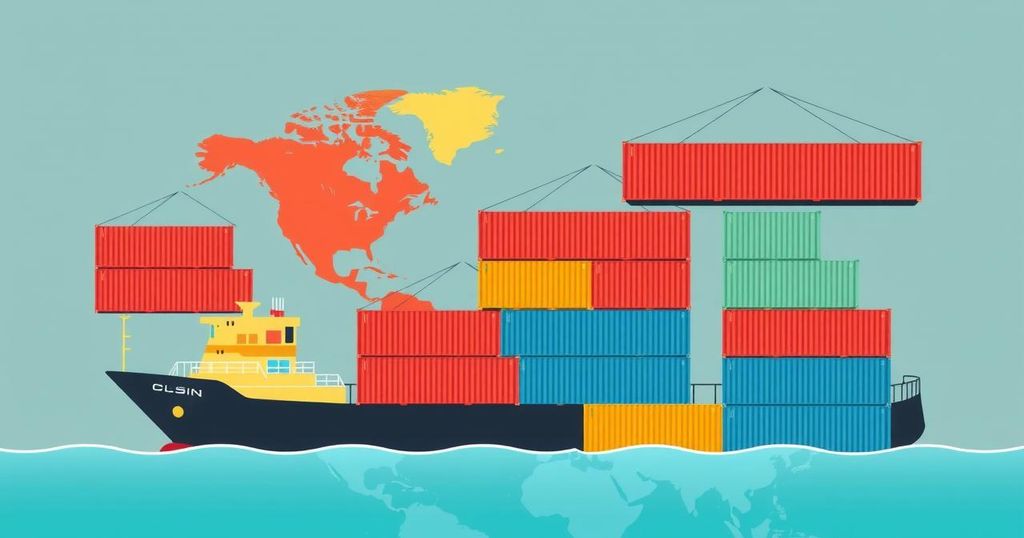Trump’s Tariffs Ignite Global Trade War: Impacts on Argentina and Beyond
President Trump has imposed a 10 percent tariff on imports from various nations, including Argentina, inciting a global trade conflict. This decision has drawn criticism from affected countries and raised concerns about economic repercussions in the U.S. Major tariffs also apply to China, the EU, and several other countries, creating a tense international trade atmosphere.
On Wednesday, U.S. President Donald Trump initiated a significant trade conflict by imposing a 10 percent tariff on imports from various countries, alongside harsher levies on major trading partners such as China and the European Union. In a statement from the White House Rose Garden, Trump described this move as a declaration of economic independence, dubbing it “Liberation Day.”
The announcement was met with immediate backlash; China expressed that the tariffs could jeopardize global economic progress, while Australia condemned them as actions from an unfriendly nation. Notably, Argentina will also face the 10 percent tariffs on its exports to the United States, despite President Javier Milei’s strong relationship with Trump, heightening concerns about the viability of its sales.
Trump’s tariff policies included a significant 54 percent tariff on imports from China and a 20 percent surcharge on goods from the European Union. Japan faces a 24 percent tariff, with further tariffs imposed on key allies including Britain. These measures reflect Trump’s administration’s ongoing misgivings towards nations perceived to mistreat the U.S. in trade.
Additionally, previously enacted tariffs on steel and aluminum imports, totaling 25 percent, continue to affect Argentine producers. Alongside these tariffs, further investigations into copper and lumber imports are underway, potentially leading to additional duties. Despite criticisms regarding these tariffs, Trump maintained that they would usher in a “Golden Age” for the U.S. economy.
The President described the tariffs as “reciprocal,” although many experts disagree with the government’s assessments of foreign tariffs on U.S. imports. Concerns about recession in the U.S. loomed as retail prices surged, while countermeasures from affected nations threatened to escalate the situation. Asian nations like Cambodia, Vietnam, and Myanmar are expected to face heightened tariffs as well.
Major U.S. trading partners Canada and Mexico remain unaffected by the new tariffs, although they continue to carry existing duties imposed earlier. In contrast, several South American trading partners, including Brazil, Chile, and Colombia, are subjected to the 10 percent tariff. Brazil’s Congress swiftly approved a law allowing for economic retaliation, underscoring regional tensions.
Even remote areas like the Heard and McDonald Islands and the Malvinas (Falkland) Islands were hit by Trump’s global tariffs, with the latter facing a staggering 41 percent on exports. This widespread imposition of tariffs illustrates the far-reaching impacts of Trump’s economic policies on international trade relationships.
In conclusion, President Trump’s recent tariffs mark a significant escalation in the ongoing trade war, affecting numerous countries including Argentina. While his administration views these measures as a means of achieving economic independence, they have sparked widespread international backlash and concerns of a recession. As various nations prepare to counter these tariffs, the potential for retaliatory measures looms large, thus complicating global trade dynamics.
Original Source: www.batimes.com.ar








Post Comment